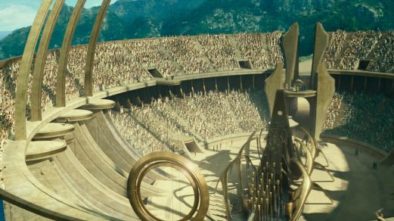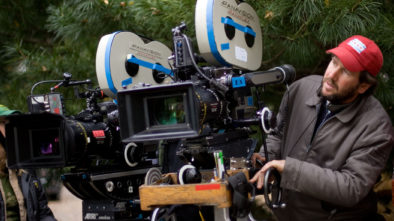Joker Origins: The Two Characters in ‘The Man Who Laughs’ Who Influenced The Clown Prince of Crime
Court jesters, carnival sideshow freaks, circus clowns — the creepy, malevolent, clown has an uncomfortable history associated with entertainment and cruelty. Stephen King’s Pennywise recently terrorized in big-screen adaptations IT and IT Part 2, but, nonetheless, the most famous creepy clown is the Joker, Batman’s arch-nemesis, and Gotham’s gleeful Clown Prince of Crime.
The Joker’s backstory in DC Comics is fluid. Like all DC characters, he’s gone through so many rebirths, iterations, and Elseworld tales it’s hard to lock his backstory down. As he jests in The Killing Joke, “I mean, what is it with you? What made you what you are? Girlfriend killed by the mob, maybe? Brother carved up by some mugger? Something like that, I bet. Something like that … Something like that happened to me, you know. I … I’m not exactly sure what it was. Sometimes I remember it one way, sometimes another way, sometimes another … If I’m going to have a past, I prefer it to be multiple choice!”
He’s a slippery character. A Joker. A Trickster. And his origin, behind the scenes, is also opaque, with differing accounts from Batman co-creator Bob Kane, comic book artist Jerry Robinson, and former DC Comics editorial director Carmine Infantino. Infantino believed Finger was inspired by “Funny Face”, the logo for Steeplechase Park in Coney Island.
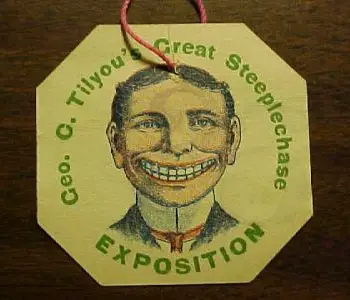
“Funny Face”, the logo of Steeplechase Park, is believed to be an influence on the Joker.
Kane also attributed Joker to Finger but said it was Conrad Veidt’s character, Gwynplaine, in the 1928 film, The Man Who Laughs that influenced Joker. There is no getting around it, Joker does look a lot like Veidt in the film, and if you have NOT seen the film, then you’re likely to just agree with the common narrative. Joker has that white face, permanent smile, large upper teeth, and combed back hair that Veidt immortalized. That grin and, for the most part, the hair is ubiquitous across most iterations of Joker in the comics. However, in The Man Who Laughs, there is another clown, a court jester, named Barkilphedro, who also influenced Joker’s look. He has the pointy chin and the elongated face that almost all comic book iterations of Joker share. Some comic Jokers also share Barkilphedro ‘s big Roman nose. Jerry Robinson, who comic historians attribute to creating the Joker, threw the proverbial spanner in the design works when he claimed his picture of a jester on a playing card was the basis for the Joker. The playing card, which was on public display in various exhibitions in the 2000s, looks very similar to Barkilphedro (Brandon Hurst), not Veidt’s Gwynplaine.
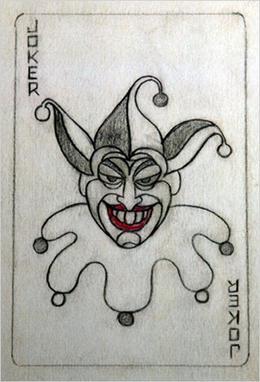
Jerry Robinson’s playing card, which he said influenced the design of the Joker, looks more like Barkilphedro, the court jester (below) in The Man Who Laughs, than Conrad Veidt’s Gwynplaine.
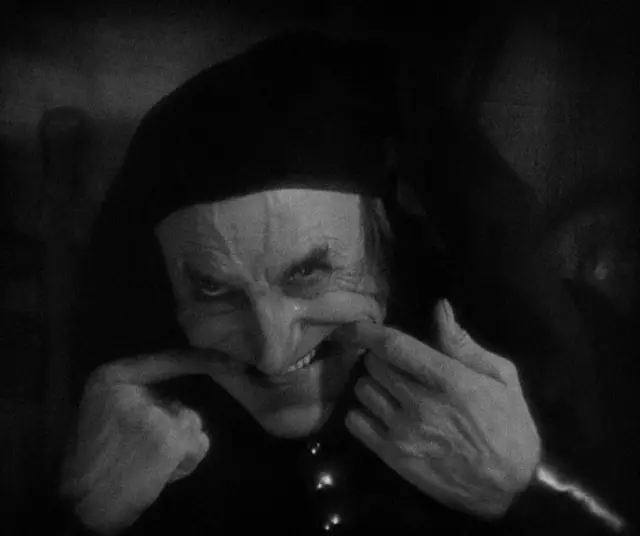
Importantly, Barkilphedro is the villain in The Man Who Laughs. He shares similar character traits to Joker, while Veidt’s Gwynplaine does not. Gwynplaine is a tragic hero, deformed by child-sellers, who cut the corners of his mouth into a permanent smile. He could have easily followed the path of vengeance that numerous wronged and deformed antiheroes do in literature. But in Victor Hugo’s novel, on which the film is based, Gwynplaine takes a different path into the arms of Dea, a beautiful blind woman. Both the film and novel juxtapose Gwynplaine’s inner goodness with physical deformity. The film with its German Expressionist aesthetic plays on body horror focusing on Gwynplaine’s exaggerated upper teeth, the derision he receives from audiences laughing at his appearance during his performances in a carnival sideshow, and the way he shies away when not performing by covering his mouth with a scarf or his hand. He’s the opposite of what he looks like. Barkilphedro, on the other hand, is duplicitous, ruthless, and his wide, gleeful grin shows he revels in the suffering of others. The Joker is often referred to as The Trickster and The Jester–labels that have nothing to do with Gwynplaine but perfectly describe Barkilphedro.
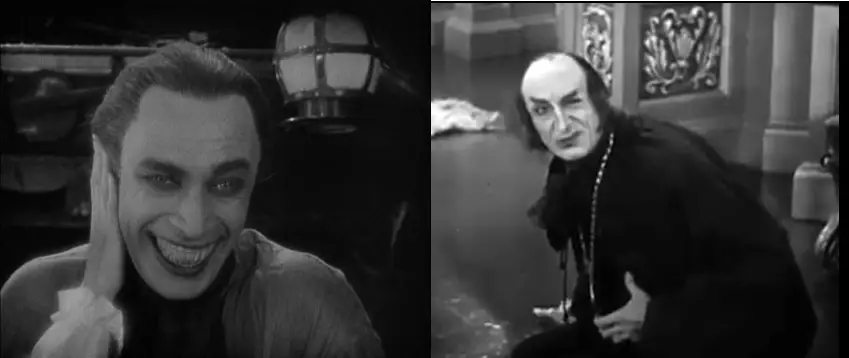
Conrad Veidt’s Gwynplaine (left) is noted as the template for The Joker. However, the physical traits of Barkilphedro (right) become more visible in later incarnations of the Joker on film. And his elongated face and pointy chin are present in comic book art from the beginning.
Viewed side-by-side, the Joker’s look in comic book art and animated TV shows is a composite character of both Gwynplaine (with his wide mouth, large upper teeth, combed back hair) and Barkilphedro (with his pointy chin, elongated face, and sometimes, his large, roman nose). The live-action television and film versions lean heavily into Veidt’s look as Gwynplaine. The wide smile and hair are so iconic and so ubiquitous across all depictions of Joker that when someone sees an image of Conrad Veidt’s Gwynplaine, especially with those large, upper teeth, they could easily misidentify him as the first cinematic Joker!
However, as we’ll see, later big-screen incarnations embody more of Barkilphedro’s features, especially when the character is portrayed as a nihilist or an anarchist. Clearly, the make-up artists recognized the darker side of Joker’s personality in the court jester from The Man Who Laughs.
Veidt’s Makeup
Jack Pierce, the makeup artist on The Man Who Laughs, was influenced by the German Expressionist aesthetic in designing Gwynplaine’s look. White face paint is, of course, an essential characteristic of all clown faces. But it also featured on every ghoulish character in German Expressionist films. Look at the Expressionist rogues gallery of Cesare, Dr. Caligari, Dr. Mabuse, among others; they all have white faces with dark eye makeup.
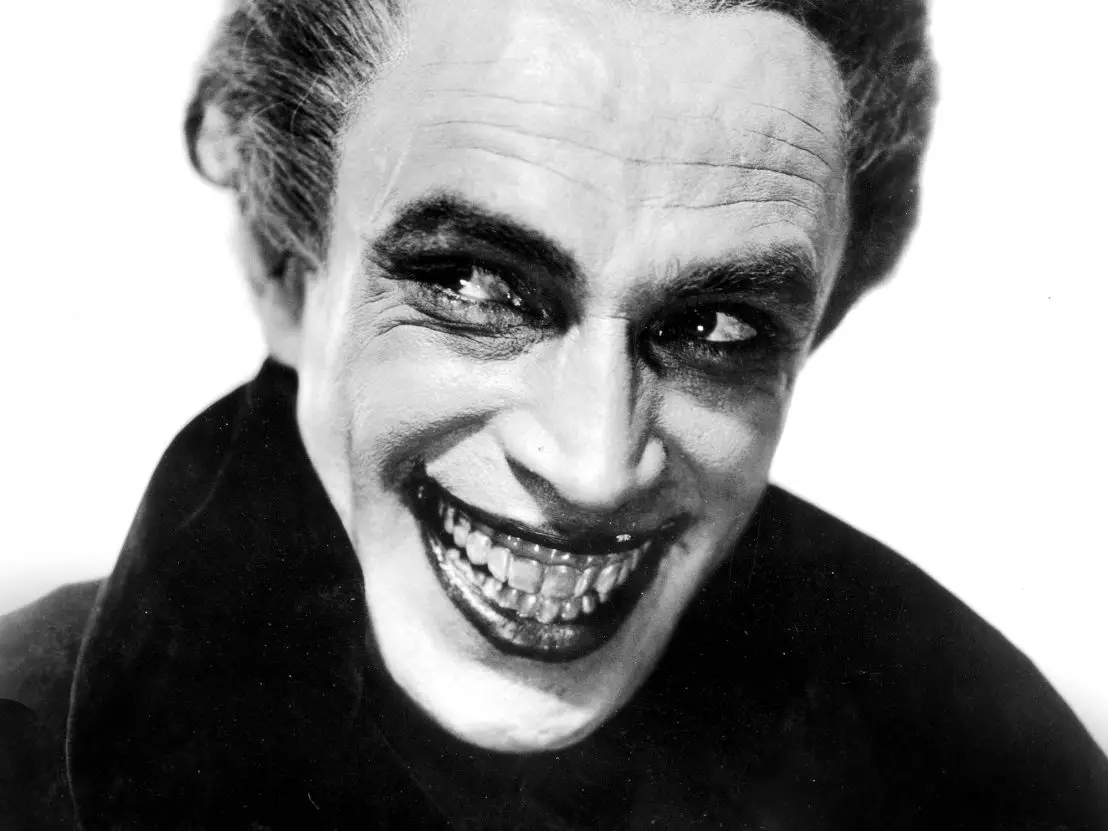
Conrad Veidt in The Man Who Laughs
With makeup, Pierce emphasized that Gwynplaine is both a creepy and sympathetic character. Gwynplaine shared the inhuman, pallid complexion of Expressionist villains, but lacked their dark eye makeup. With no dark rings around his eyes, Veidt could express the anguish and sometimes tears behind his perpetual, maniacal grin. That grin, especially the oversized upper teeth, became the focal point. Pierce made snaggly, false teeth equipped with hidden hooks to pull back the corners of Veidt’s mouth, an idea which Pierce copied from Lon Chaney’s makeup in The Phantom of the Opera.
Cesar Romero, the first live-action Joker, appeared in the cult 60s TV series, Batman. He sports that big wide smile throughout his tenure, with red makeup used to extend the corners of his mouth. His makeup is pretty unremarkable as he looks like a water-down version of Veidt.
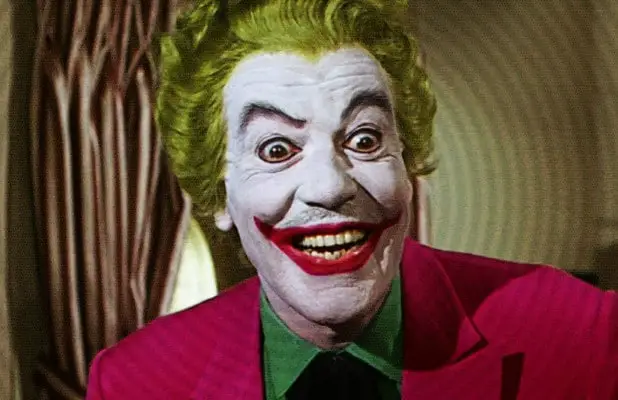
Cesar Romero
Jack Nicholson’s Joker
It would be over two decades before the Joker would get another live-action treatment, this time on the big screen in Tim Burton’s phenomenal worldwide hit, Batman (1989). Burton is strongly influenced by German Expressionism especially in the design of his characters. Edward Scissorhands, Beetlejuice, Catwoman, The Penguin, and, of course, Jack Nicholson’s Joker, can all be traced back to characters from German Expressionist films.
The transformation of Nicholson’s Joker when he falls into a vat of acid plays out like a German Expressionist and Universal Monster movie film, which had so inspired Burton in his childhood. It’s no surprise Gwynplaine would find his way into Nicholson’s visage, but Nicholson, at least, got some say in how his makeup would look. After flipping through comics he wanted that elongated look to his face, which directly harks back to Barkilphedro. Makeup artist Nick Dudman took molds of Nicholson’s face to create prosthetics which, when applied to Nicholson’s face, gave him a permanent and gruesome grin whether his mouth was open or closed.
“I did one life cast as you would normally with his face relaxed in a normal position, and one cast where I asked him to pull the most extreme grin that he could pull, which was quite extreme. Molded these various items, produced casts of him smiling and not smiling that I could then sculpt on. So I then went back and started trying to sculpt a smile that was always there but needed him to smile behind it to take it to the full extent.”
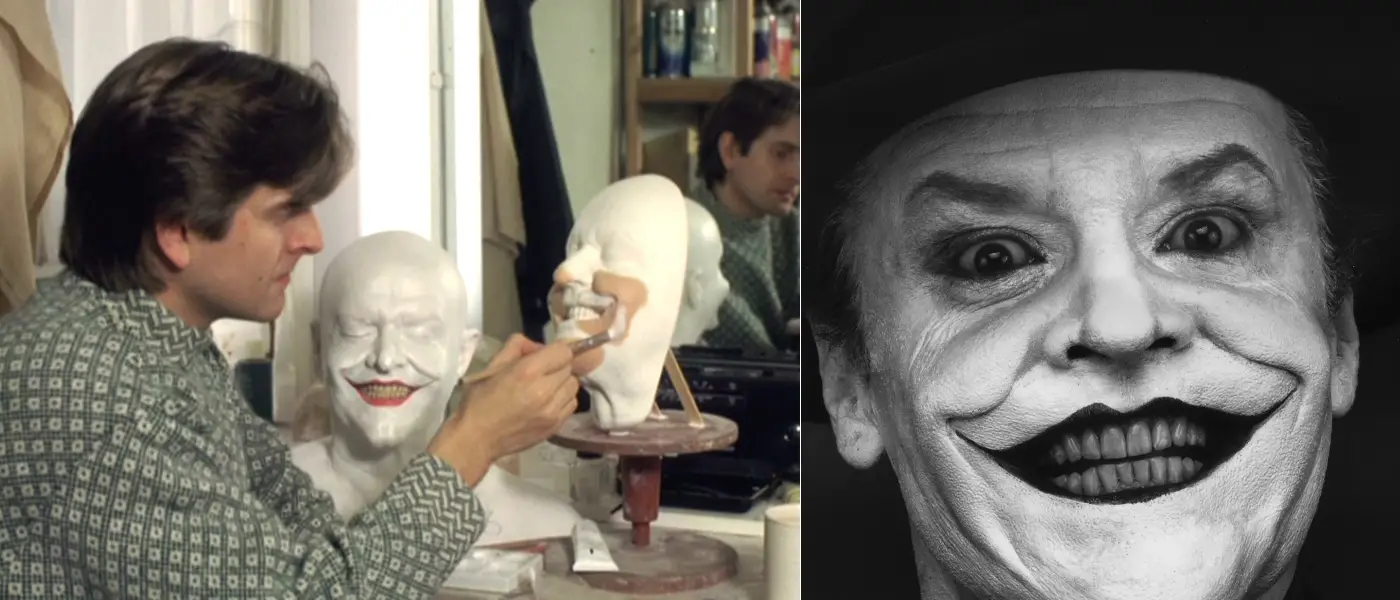
Makeup artist Nick Dudman made prosthetics from molds of Jack Nicholson’s face (left). When applied, the prosthetics gave Nicholson a permanent grin, while allowing him to freely open and close his mouth.
Heath Ledger’s Joker
Heath Ledger’s Joker tops many lists as best Joker performance and, indeed, one of the best onscreen villains. He’s an anarchist, with no plan other than to cause chaos. In no way does Ledger imitate Nicholson’s performance, and his makeup follows suit. The corners of Ledger’s mouth are clearly mutilated by the unkind cuts of a blade, echoing the butchery sustained by the young Gwynplaine in The Man Who Laughs. The Joker says his father gave him those scars, but later he contradicts this and suggests he mutilated his own face. Joker’s hair, though, is more like Barkilphedro’s unkempt mop–a trend which is continued in Joaquin Pheonix’s Joker.
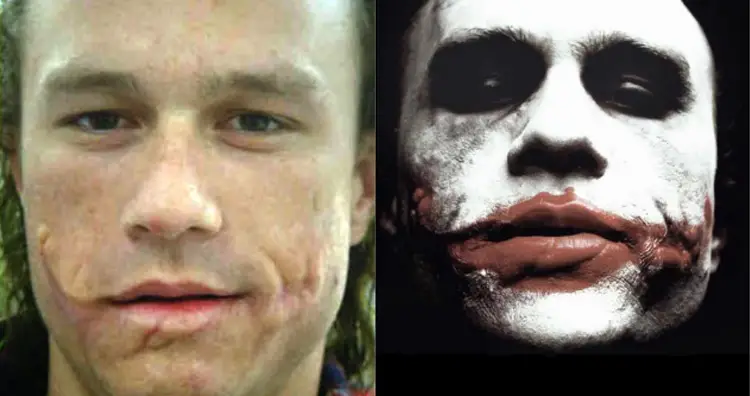
Heath Ledger’s prosthetic scars before and after white makeup. The connection to the literary Gwynplaine seems likely.
Jared Leto’s Joker
The DCEU introduced us to a new Joker who was set to feature in multiple films. Played by Jared Leto, he looked like a punk-rocker crossed with a gangster when he first appeared in Suicide Squad (2016). Audiences didn’t take to his crazed, unblinking look, and those tattoos and silver teeth. Still, the basis for Leto’s look is Gwynplaine with his combed-back hair and wide smile. Even the silver teeth grills are a riff on Gwynplaine’s large upper teeth, though it may have been unintentional. Leto’s Joker does, however, have one explicit nod to Gwynplaine. He has a tattoo of a mouth on his left hand, which he holds over his own mouth just like Gwynplaine did with his hand when he shyly covered his mouth.
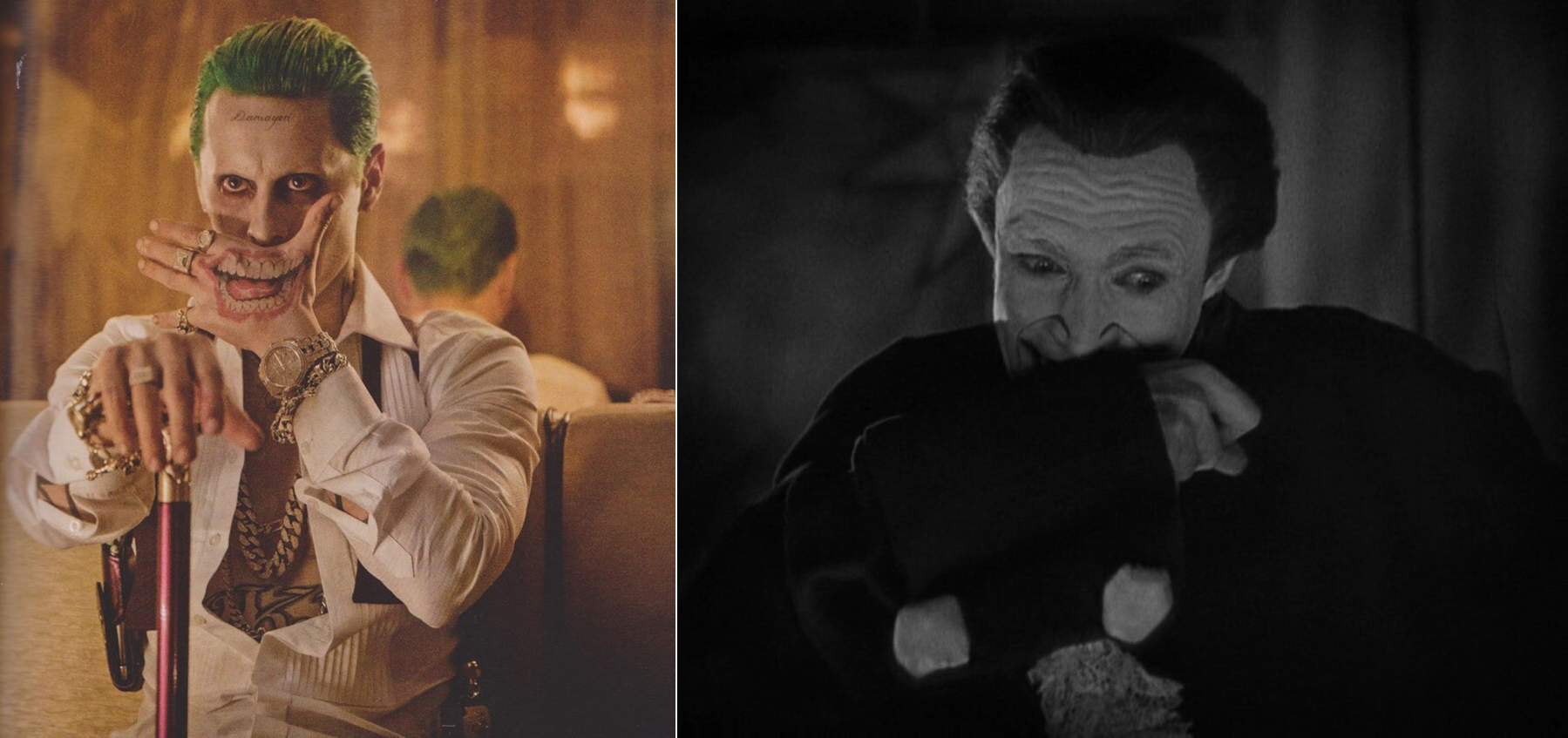
Zack Snyder dropped the tattoos, silver teeth, and green hair altogether for Zack Snyder’s Justice League, and Leto’s long hair is a small nod to Barkilphedro. But it is in Todd Phillipp’s Joker that we see, finally, a more overt representation of Barkilphedro.
Joaquin Pheonix’s Joker
In Joker, director Todd Philips and makeup artist Nicki Ledermann seems to be consciously aware of The Man Who Laughs. Arthur Fleck, a mistreated social outcast, descends more and more into vengeance and brutality as the film progresses. Unlike Gwynplaine, there’s no hope for Fleck and the only outcome is for him to choose the darker path of vengeance. Specific references in the film make it clear that Ledermann and Philips deliberately chose to reference Barkilphedro (and other characters in The Man Who Laughs) in Arthur Fleck’s appearance and performance.
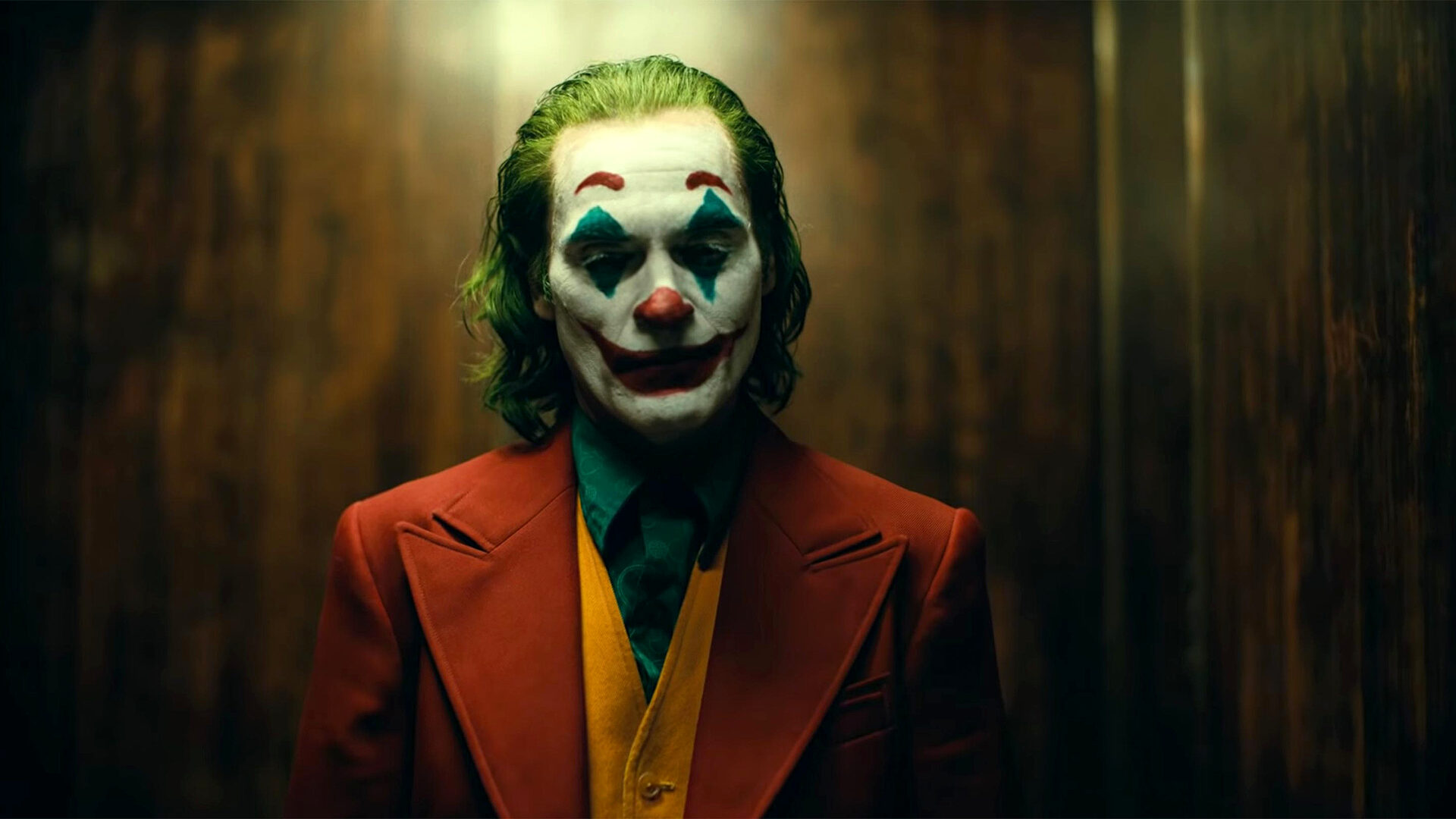
Phoenix’s makeup design is based on the supporting clowns in The Man Who Laughs, not Gwynplaine. He also has the elongated face, nose, and hair reminiscent of Barkilphedro. He also mimics Barkilphedro when he pulls up the corners of his mouth when applying the makeup in the mirror.
Joker’s makeup is the same makeup as the supporting clowns in The Man Who Laughs, but his hair, behavior, and mannerisms often mimic Barkilphedro. Phoenix, whose acting chops make him perfect to play such a dark, deranged version of the character, also just happens to have a similar elongated face, pointy chin, and long, angular nose to Brandon Hurst, who played Barkilphedro. The connection between Joker and Barkilphedro is made clear when Fleck pulls up the corners of his mouth just like Barkilphedro does when he mocks Gwynplaine in The Man Who Laughs. The punchline is that by pulling this face at himself in the mirror, he’s mocking the very origin on which he is supposed to be based–Conrad Veidt’s Gwynplaine.

- Heart of Stone: Female Bond-Clone References Moonraker, On Her Majesty’s Secret Service and Other Bond Films - February 8, 2024
- How Editor Peter Hunt Saved ‘From Russia With Love’ - January 27, 2024
- This Periodic Table of Tropes Is The Ultimate Storytelling Infographic - January 22, 2024


